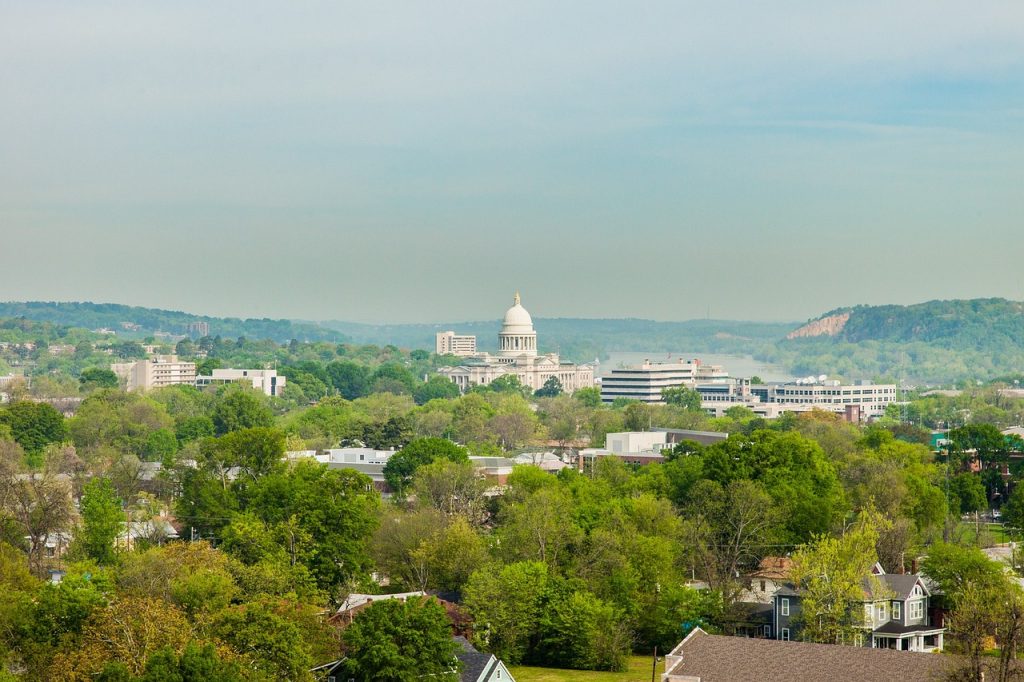Get a 501 Area Code Phone Number in Little Rock

What is 501 Area Code?
Area Code 501 is a North American telephone area code that plays a crucial role in identifying the origin of phone numbers within the United States. These area codes are fundamental for efficiently routing phone calls and managing telecommunications services.
Where is 501 Area Code?
The 501 area code is located in central Arkansas and covers the cities of Little Rock, Conway, and North Little Rock, as well as most of the rest of the region. It is the only area code that serves the area. This area code is emblematic of the distinctive culture, history, and communities that flourish within its boundaries, contributing to the rich tapestry of central Arkansas.
As the capital and largest city of Arkansas, Little Rock is the epicenter of Area Code 501. It is known for its historic sites, cultural attractions, and economic significance. The city is a hub for government, commerce, and education.
The geographic reach of Area Code 501 encompasses a wide array of communities, each contributing to the unique character of central Arkansas. It serves as a vital telecommunications link, connecting the diverse communities and residents who call this region home. The area’s economic diversity, cultural richness, and natural beauty make it a compelling and distinctive part of the Natural State.
The Time Zone of 501 Area Code
Area Code 501 operates within the Central Time Zone (CT). As a result, residents and businesses within this area generally follow Central Standard Time (CST) during non-daylight saving months and Central Daylight Time (CDT) when daylight saving time is in effect.
The History of 501 Area Code
The history of Area Code 501 is closely intertwined with the development of telecommunications in Arkansas. Initially, the entire state was served by a single area code, 501. However, as the population expanded and the demand for phone services grew, it became clear that a new area code was necessary to meet the needs of the central part of the state. On January 7, 1950, Area Code 501 was officially introduced to provide relief and establish its distinct identity within Arkansas.
The Demographics of 501 Area Code
With a population of approximately 589,140 residents, this area code encompasses a mix of urban and rural communities, fostering a vibrant atmosphere.
In terms of racial and ethnic diversity, Area Code 501 showcases a rich tapestry of backgrounds. Whites make up the majority at 73.5%, reflecting a significant presence in the area. African Americans are also prominent, accounting for 20.6% of the population. Hispanic or Latino communities contribute to the area’s cultural diversity, representing 4.8%. Additionally, there is noteworthy representation from Asian communities at 1.1%, Native Americans or Alaska Natives at 0.7%, and individuals identifying with two or more races at 0.8%.
The gender distribution within Area Code 501 is nearly balanced, with 49.3% being male and 50.7% female, indicating a relatively equal gender ratio. The age distribution paints a diverse demographic profile, with a median age of 37.6 years. Approximately 23.7% of residents are under the age of 18, while the working-age group of 18-64 constitutes the majority at 62.7%. Seniors aged 65 and over make up 13.6% of the population, highlighting the presence of a mature community.
In terms of income, the median household income stands at $60,984, reflecting the economic conditions within the region. Approximately 15.2% of residents fall below the poverty line, emphasizing the importance of addressing economic disparities and social welfare initiatives within Area Code 501.
The Main Industries of 501 Area Code
The economy of Area Code 501 thrives on a variety of industries, each playing a vital role in shaping its character and providing employment opportunities. Some of the primary industries in the region include:
- Healthcare and Education: Healthcare facilities and educational institutions, including universities and schools, are vital components of the local economy.
- Manufacturing: Manufacturing facilities in the area produce a range of products, contributing to the region’s economic diversity.
- Retail and Commerce: The area boasts a thriving retail sector, including shopping centers and businesses that cater to the needs of residents.